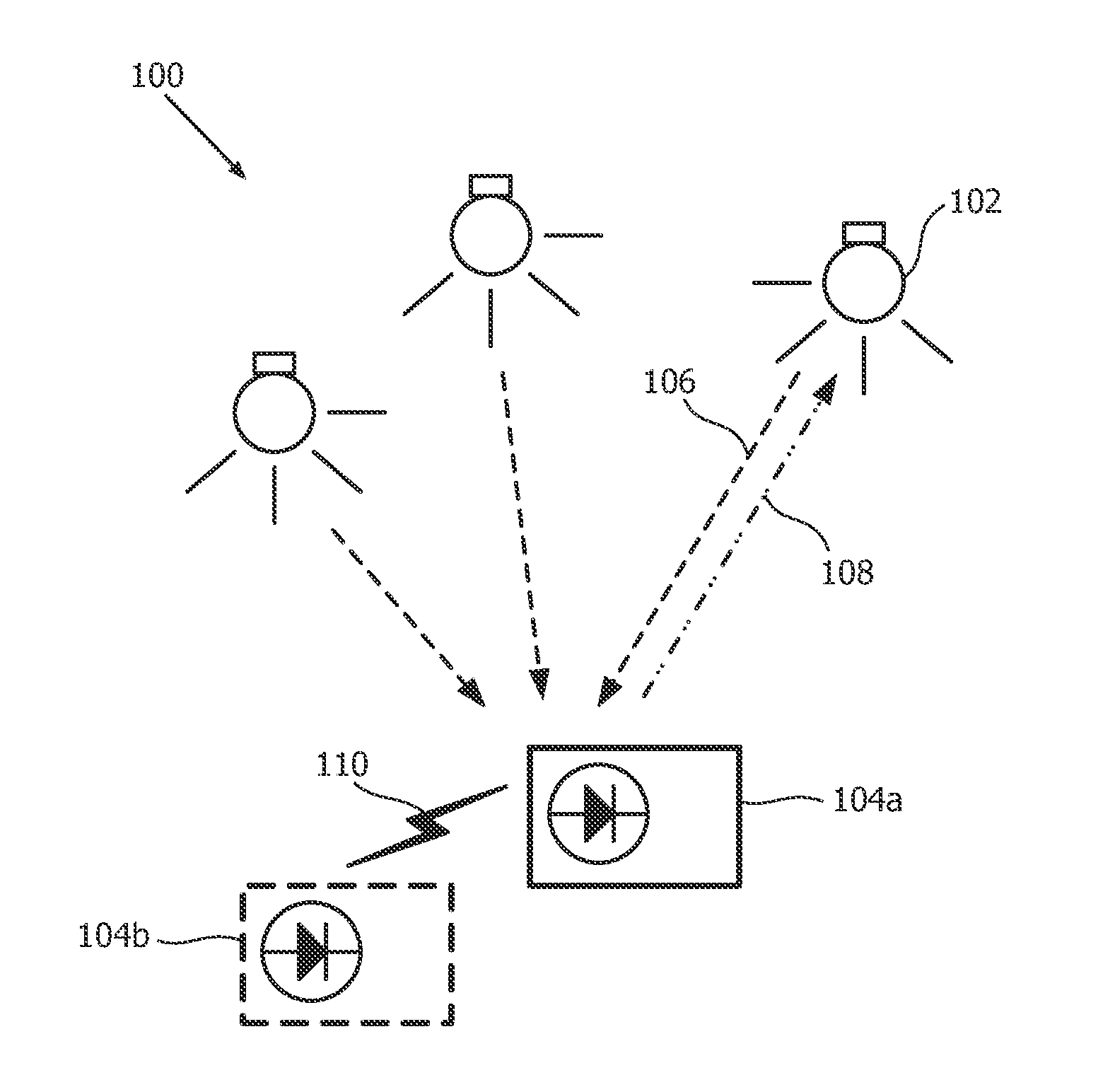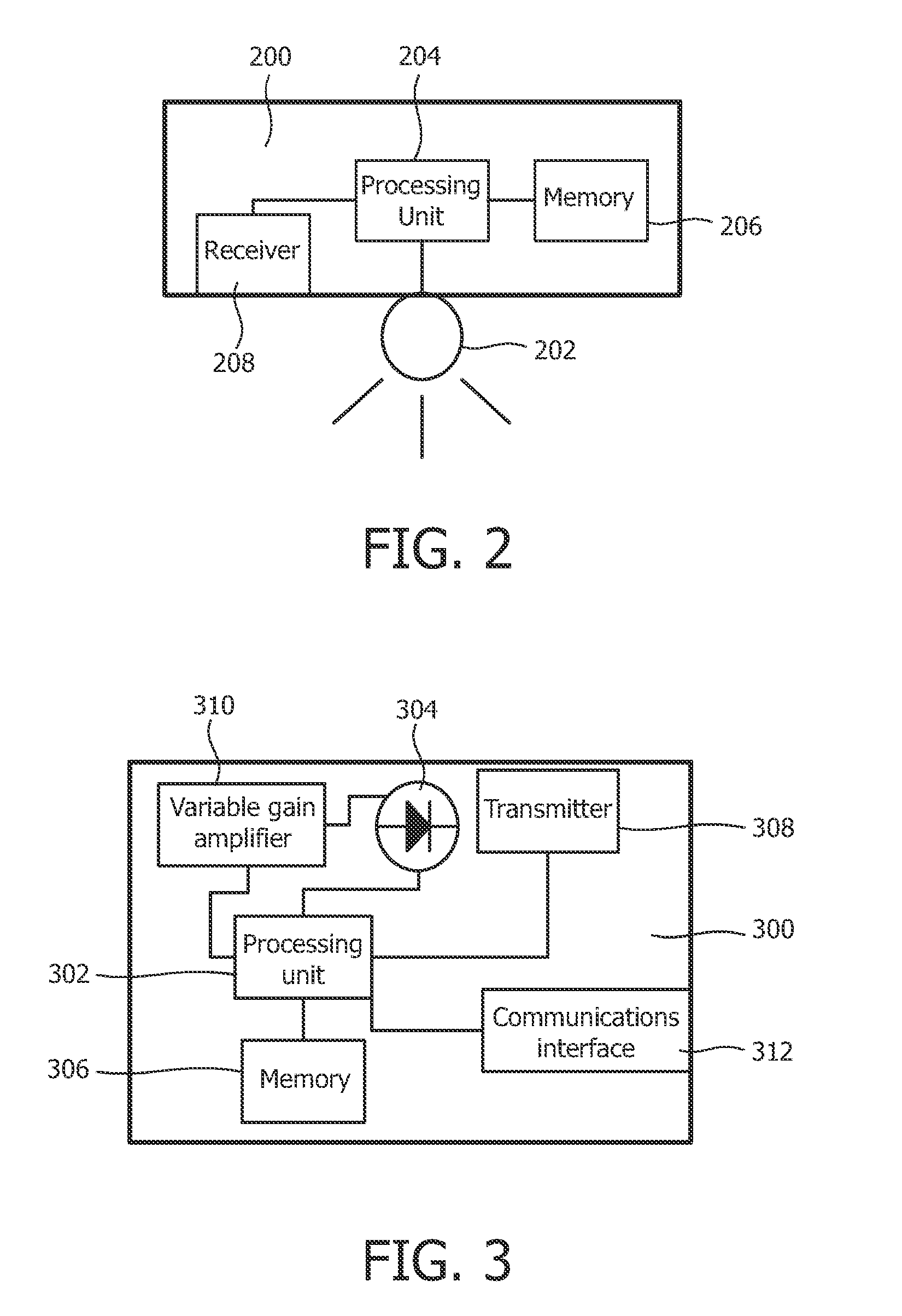Commissioning Coded Light Sources
a light source and code technology, applied in the direction of electromagnetic transmission, close-range type systems, transmission, etc., can solve the problems of difficult to successfully extract the identifier of the control device, the sensitivity of the control device is a practical problem, and the response of the resulting control system is fast, so as to improve the commissioning effect of the light sour
- Summary
- Abstract
- Description
- Claims
- Application Information
AI Technical Summary
Benefits of technology
Problems solved by technology
Method used
Image
Examples
Embodiment Construction
[0025]The below embodiments are provided by way of example so that this disclosure will be thorough and complete, and will fully convey the scope of the invention to those skilled in the art. Like numbers refer to like elements throughout.
[0026]FIG. 1 illustrates a lighting system 100 comprising at least one light source, schematically denoted by the reference numeral 102. The light source 102 may be part of a lighting control system, thus the lighting system 100 may be denoted as a coded lighting system. It should be noted that the term “light source” means a device that is used for providing light in a room, for purpose of illuminating objects in the room. Examples of such light providing devices include lighting devices and luminaires. A room is in this context typically an apartment room or an office room, a gym hall, a car, a room in a public place or a part of an outdoor environment, such as a part of a street. Each light source 102 is capable of emitting light, as schematical...
PUM
 Login to View More
Login to View More Abstract
Description
Claims
Application Information
 Login to View More
Login to View More - R&D
- Intellectual Property
- Life Sciences
- Materials
- Tech Scout
- Unparalleled Data Quality
- Higher Quality Content
- 60% Fewer Hallucinations
Browse by: Latest US Patents, China's latest patents, Technical Efficacy Thesaurus, Application Domain, Technology Topic, Popular Technical Reports.
© 2025 PatSnap. All rights reserved.Legal|Privacy policy|Modern Slavery Act Transparency Statement|Sitemap|About US| Contact US: help@patsnap.com



